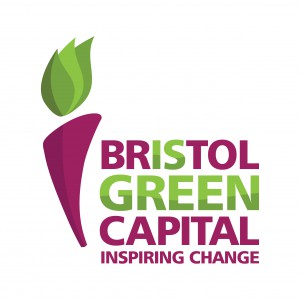Cabot Institute Director Professor Rich Pancost will be attending COP21 in Paris as part of the Bristol city-wide team, including the Mayor of Bristol, representatives from Bristol City Council and the Bristol Green Capital Partnership. He and other Cabot Institute members will be writing blogs during COP21, reflecting on what is happening in Paris, especially in the Paris and Bristol co-hosted Cities and Regions Pavilion, and also on the conclusion to Bristol’s year as the European Green Capital. Follow #UoBGreen and #COP21 for live updates from the University of Bristol. All blogs in the series are linked to at the bottom of this blog.
One of the dominant themes of COP21 has been the crucial role of cities, from the Blue Zone to Paris City Hall to the Sustainable Innovation Forum (SIF) at Le Stade de France. In fact, on Tuesday at the SIF, Aron Cramer of BSR declared that ‘Cities have been the heroes of COP.’
The Compact of Mayors has grown larger and stronger. The C40 group continues to set a more aggressive agenda than their respective nations. And in the Green Zone, the Cities & Regions Pavilion, co-hosted by Bristol and Paris and facilitated by ICLEI – Local Governments for Sustainability has showcased the ambitions of dozens of cities. Repeatedly, city leaders have said to national leaders – “no matter what you commit to, we will deliver it; and in all likelihood, we will push further and faster.”
In the Pavilion, there has been a non-stop buzz of workshops, presentations and debates. From a Bristol perspective, this has been stimulated by an inspiring and demanding year as the European Green Capital. From the Paris perspective, it has been stimulated by its role as host. However, a particularly deep and long-lasting contribution to all of COP21 has come from ICLEI.
ICLEI has been leading the mobilisation of sub-national actors for 25 years and is distinguished because it works with a wide range of entities of all scale: small cities, large cities, and regions. However, ICLEI did not simply come to Paris to represent those groups; it asked them to make and share their own commitments, ambitions and strategies.
These projects are part of the Transformative Action Program (TAP), managed by ICLEI, and in many ways they are the city and region companion to the INDCs.
Bristol committed to finding 1 billion euros of investment to retrofit a third of its houses, a proposition based in part on research conducted by University of Bristol Cabot Institute academics. It also committed to the Bristol Brain, a city emulator that will empower citizens and leaders to make bolder but more informed planning decisions. Not to be outdone, Copenhagen committed to carbon neutral energy provision by 2025.
 |
| Kaohsiung City. Image from Wikipedia. |
Today was East Asia’s turn and they produced some of the boldest proposals, appropriate given the fact that the Mayor of Seoul, Won Soon Park, is also the President of ICLEI. A recurring theme was the integration of food, water and energy sustainability and the coexistence with nature. Kaohsiung City, for example, aimed to achieve, among other goals: ‘…Prosperity with Mountain and Ocean and a Liveable Homeland.’ Taichung proposed a TAP for the ‘City Food Forest’ and highlighted the importance of integrating the next generation of farmers into their future city thinking. Throughout the past week and a half, a recurring theme has been the need for breaking free of silo-ed thinking in order to achieve system change; these Asian cities are doing that.
Comparing these plans to those of European nations illustrates the particular challenge of political boundaries. Bristol is an urban area of >1 million people, but its Mayor and City Council only govern a ‘city’ of 500,000. It must find a way to develop integrated sustainability policies that support and include those 1 million people but also the wider hinterland – the surrounding countryside that supports nature, agriculture and wind turbines.
This is why the TAPs can be so useful. Many of the 120 publicly available on the ICLEI website are commitments but many are also mechanisms for policy change. They allow us to compare and contrast, and therefore to learn and reflect. They are invitations to constructive criticism but also opportunities to share knowledge.
This blog is part of a COP21 daily report series. View other blogs in the series below:
- Monday 30 November: COP21 daily report
- Tuesday 1 December: Setting a more ambitious agenda – Bristol’s Transformative Action Plans
- Wednesday 2 December: Reflecting on the science of climate change
- Thursday 3 December: The politics and culture of climate change
- Friday 4 December: Be brave, work together and involve the next generation
- Monday 7 December: While the politicians negotiate, the science does not stop
- Tuesday 8 December: Will we trust governments on climate?
- Wednesday 9 December: The need for innovation (but don’t call it innovation)
- Thursday 10 December: Reflections from 9 December
- Friday 11 December: Can we limit global warming to 1.5C?



.jpg)
